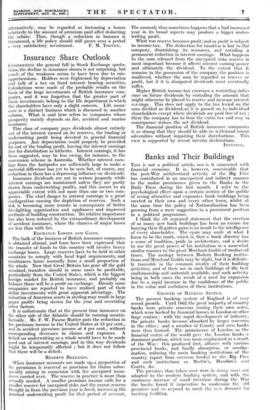GROWTH OF BANKING SYSTEM.
The present banking system of England is of very recent growth. Until 1862 the great majority of country banks were private concerns issuing their own notes, which were backed by financial houses in London or other large centres : with the rapid development of industry, the private banks became absorbed by larger concerns in the cities ; and a number of County and area banks were thus formed. The prominence of London as the financial centre of the world gave the London banks a dominant position, which was more emphasized as a result of the War : this produced first, alliance with various provincial banks, and finally absorption, or amalga- mation, reducing the main banking institutions of the country (apart from overseas banks) to the Big Five and such institutions as Martin's, Hambro's and Coutts, &c.
The premises thus taken over were in many cases not adapted to the modern banking system, and with the enormous increase of small investors during the War the banks found it imperative to modernize the old premises and to expand to meet the new demand for banking ftleilitiez. The Branch Bank of to-day is the natural heir to the Banco of the Genoese usurer : the modem counter has replaced the primitive bench and divides the public from the " usurer and his myrmidons " : four walls and a roof replace, for many reasons, the market place and open sky—yet note that the banks are always to be found in, or close to, the market place, or the place of exchange. The Manager's room provides the same facilities for closer personal touch between principal and client as did the usurer's " parlour " in a Genoese street, whilst the modem strong room is the enlargement of the strong box which the earliest money lender kept beside his bench.
There are a number of small branches in villages and seaside towns which are very little removed in their essentials from the picture I have suggested of an early bank : and the large branch bank differs from such only in scale, and not in the principle of its planning.







































 Previous page
Previous page